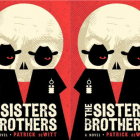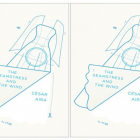The Books We Teach #2: Interview with Roxane Gay
The Books We Teach series will feature primary, secondary, and post-secondary educators and their thoughts about literature in the face of an evolving classroom. Posts will highlight literary innovations in teaching, contemporary literature’s place in pedagogy, and the books that writers teach. In the spirit of educational dynamism, we encourage readers to contribute their thoughts in the comments section.
Roxane Gay’s novel, An Untamed State, will be published by Grove/Atlantic in 2014 and her essay collection, Bad Feminist, will be published by Harper Perennial, also in 2014. She is the author of Ayiti (Artistically Declined Press, 2011), co-editor of PANK, essays editor for The Rumpus, and contributing editor for Bluestem. Her writing has appeared in The Best American Short Stories 2012, Oxford American, The Wall Street Journal, The Indiana Review, and countless others. She also runs Tiny Hardcore Press. All the while, she is an assistant professor at Eastern Illinois University.
Ever generous, Roxane chatted with me about the works she teaches, why she teaches them, and how her students interact with the texts at hand.
What classes are you teaching at EIU this term?
I’m teaching an odd mix of courses this semester: Technical Communication, Document Design, and an Advanced Fiction class in which I am teaching novel writing.
What draws you to a text, pedagogically speaking? Do any works come to mind that are as enjoyable to teach as they are to read?
I love to teach texts that I love to read as a human being. If there’s something in a book that I love, I’m generally going to be able to find several pedagogically useful ideas to teach with. One of my favorite books to teach, either in part or as a whole, is Edith Wharton’s The Age of Innocence, a book that is, really, a total package in terms of what it shows us about authorial control, detail, setting (time, place, circumstance). I don’t know that anyone describes infuriating, unrealized passion better than Wharton does.
What are a few of the contemporary works that you’re teaching this term? Why choose these works?
I am teaching books like Hunger Games, Room, and Mr. Penumbra’s 24-Hour Bookstore, which is very new. I am using Mr. Penumbra’s 24-Hour Bookstore because the novel is literary, but also has a clearly defined plot. The book’s flaws (too much easy resolution of various plot points) are useful within the context of a novel writing class. There is, overall, a charming energy to the writing I thought my students would appreciate.
When you read and write do you often find yourself thinking as a teacher?
I don’t find myself overtly thinking as a teacher and that may be why it’s so easy for me to pull texts from my reading life into my teaching life. It’s all pleasure for me. My writing and teaching definitely inform each other but it’s hard to articulate exactly how. It’s all a continuum of what I do.
Could you talk to me a little about one text that elicited a wholly positive response from your students? What about this piece caused such collective enthusiasm?
One story that always goes over well is Matt Bell’s “An Index of How Our Family Was Killed,” which appeared a couple years ago in Web Conjunctions. It’s such a strange story in that it is, literally, an index. At first, students don’t even know how to approach the story as a narrative, but then they get deeper and deeper into the story and they see the craft at work as much as they see its poignancy. How the story brings out an Aha! moment is probably why it always elicits such a positive response. “The Art of French Cooking,” a story as recipe by Art Taylor (PANK online) also goes over really well with students. They are always impressed by stories that experiment with form. It’s as if such a thing didn’t occur to them before they came into the fiction classroom.
Is there a text that you were taught as a student that you now teach as a teacher?
A text I draw from that I encountered as a student is What If, a book of writing exercises. Though some of the exercises can be cheesy, I learned a lot from using the book and the right exercises from the book bring a lot to my teaching. One of my favorite exercises in What If that I like to use is to have students write a short story using only one syllable words. It really forces them to think carefully about language and meaning and with a little effort, students are able to produce really amazing work.
Can you recall a unit of which you’re particularly fond? What makes these stories fit so perfectly together?
I teach a unit of flash fiction featuring:
“Trigger Shy” by Casey Hannan (Wigleaf)
“The Demonstration of Gravity” by Tracy Gonzalez (Bluestem)
“Finding There” by Lindsay Hunter (Cricket Online Review)
“We Did Division in a Concrete Room” by Blake Butler (Everyday Genius)
These stories are all quite different from one another, and two of them are quite inscrutable, so I always enjoy the discussions they bring about when presented as a suite of stories. Take, for instance, the Butler story—students are often intrigued by the language and setting of the story as well as its profound strangeness. With all of the stories, discussions center around: “What is a story?” We talk about how the traditional story structure (inverted checkmark from crisis to resolution) is or is not evident in these stories. We talk about dark writing, violence, mourning, and how writers can or cannot create an emotional impact with so few words.
You recently interviewed Laird Hunt for Bookforum and I loved your question and Laird’s response about writing the Other. How do you address the topic of writing about difference in your classroom?
I always encourage students to write beyond themselves because that is the whole point of fiction. I’m actually thinking through ideas right now about how to encourage the writing of difference more explicitly in my classes.
As part of the Bankhead Visiting Writers series, you were a recent visiting professor at The University of Alabama and taught a class about the writing of difference. How did your students respond to the class? How did you?
This discussion and the student response exceeded all expectations. Students were particularly appreciative of discussing political considerations in a creative writing class. Many said they had not had that kind of exposure before. I definitely continue to think about the importance of empathy and that empathy has a place in our pedagogical work. I am newly energized about continuing to bring this up in my class because I think that helping our students think about empathy, both explicitly and implicitly, can allow us to become better fiction writers because empathy forces us to look outward, and to do so with generosity.
Do you talk with your students about your own projects? Or about what it means to be a writer who engages with/is a part of a new media culture? Do they often read what you write?
I don’t talk to my students much about my writing other than to tell them I am a working writer. They do Google me, or learn things about me and read my writing, Twitter, and blogs. It’s a bit awkward, but I cannot control it so I try not to think too hard about it. Thus far, students have been strangely excited to find my work, like it’s a juicy secret or something. One student even told me she was a superfan and I was just flabbergasted. I signed her book and she posted it on Twitter like I was… fancy. It’s an odd thing to both teach and write. I do openly talk about what it means to be a writer in this day and age and try to stress literary citizenship, both in terms of new media and engagement with literary culture in more physically present ways.



